This article is part of the World Green Building Week 2021 editorial series highlighting the role sustainable buildings play in #BuildingResilience to climate change and for people and economies.
Written by Dave Hopping, CEO, Smart Infrastructure Solutions & Services, Siemens Smart Infrastructure
While it may be a daunting prospect to commercial and industrial businesses, there is no way around the issue of decarbonisation. The transition to a net-zero carbon economy – as mandated by the 2015 Paris Agreement – will continue to affect economies and society around the world, in a positive way.
Already, decarbonisation policies and technology developments are encouraging the rise of a new energy system. The large-scale, centralised power generation of the past is making way for a network of small-scale, decentralised, low-carbon generation assets. Digitalisation is central to this new order by introducing an element of dynamism, giving customers more control and enabling different applications and business models, such as microgrids and virtual power plants, to increase carbon savings.
Of course, any fundamental change comes with opportunities and risks, as companies embarking on their respective decarbonisation journeys are undoubtedly aware. For instance, there may be risks associated with increased OPEX costs due to rising energy prices, or unforeseen policy changes. However, a decisive commitment toward decarbonisation presents an invaluable opportunity to future-proof businesses and prepare them for long-term resiliency as environmental regulations become stricter. Here are five considerations to guide businesses on a successful decarbonisation journey.
- There’s no time like the present…
For companies of all sectors, the time for decarbonisation is now. Time is of the essence, and not only for the climate. Early movers will take advantage of the opportunities and gain more time to mitigate the risks of non-compliance. Different policy mechanisms and paths are gaining traction worldwide, such as carbon pricing initiatives, including the EU’s Emission Trading System (ETS), Canada’s Output-Based Pricing System, a newly nationwide ETS in China, and the Regional Greenhouse Gas Initiative in the US. In 2019, the EU introduced its European Green Deal, and the new US administration is also set to rejoin the global effort against climate change.
Technical drivers are also increasing the pace of decarbonisation. Technologies helping to integrate renewables and stabilize the grid are playing a key role, as are those which reduce the cost of energy storage and help to drive an emerging demand-response market.
- In it for the long haul: Define a long-term decarbonisation strategy
To make it work, firms must be serious about their decarbonisation journey and carve out a long-term energy strategy. Clear targets, clear commitments, and a clear budget are vital – as are the necessary resources, preferably at CXO level. For a wide-reaching strategy, there are actions required on the management side such as allocation of resources, alignment of energy KPIs with business KPIs and supply chain alignment. On the energy demand side, firms should look to replace outdated equipment, use smart load controls, electrify mobility and review production processes. On-site power generation and energy storage should also be considered on the energy supply side.
- Choose your partners wisely: expert help minimizes risk
Support from a trusted partner with a wide range of experience is key. There are certain risks involved, such as the cost to transition an energy system, or changing carbon policies and emission trading schemes. The affordability of decarbonisation initiatives needs to be carefully considered; indeed, CAPEX requirements are often cited as a key barrier. How can businesses minimize these risks? In response, companies like Siemens have enabled a “X-as-a-Service” business model, where “X” stands for a variety of technology-related offerings, such as heat or lighting or building efficiency in general. X-as-a-Service agreements require no CAPEX, they are cash-flow neutral and minimize project risk – and they accelerate decarbonisation achievements.
- Focus your efforts
The Greenhouse Gas Protocol defines three types – or scopes – of emissions: Scope 1 emissions are direct emissions, e.g., on-site fuel combustion, company vehicles etc.; scope 2 refers to indirect emissions, e.g., from purchased energy; and scope 3 relates to all indirect emissions, including upstream and downstream emissions. Scope 3 emissions (business travel, waste generation, value chain) usually represent the largest share. Initially, consider focusing on scope 1 and 2 emissions to gain financial benefits, either in OPEX reduction in or revenue generation.
- Think holistically
Think outside the box to profit from optimisation across the system. For example, carbon savings can be enhanced by combining the electrification of a vehicle fleet with smart charging and on-site renewable energy generation, with microgrid technology.
The imperative for decarbonisation is creating an urgency for businesses to act, and many companies the world over have already started to implement their decarbonisation strategies. It’s a necessary endeavor in which we need to succeed and fortunately, decarbonisation is more technically feasible now than ever before, enabled by decentralisation and digitalisation.
To find out more about decarbonisation for your business, download our free whitepaper: Addressing decarbonisation at the grid edge.
What is World Green Building Week?
World Green Building Week is the world’s largest campaign to accelerate sustainable buildings for everyone, everywhere. Organised by the World Green Building Council (WorldGBC), it is led by our global network of 70 Green Building Councils and their 36,000 members.
Join us from the 20th–24th of September 2021 to find out how our network is accelerating the Sustainable Development Goals towards an inclusive and resilient net zero built environment.
https://worldgbc.org/WGBW2021


